Cerimonial
This award-winning extra thick matcha is sweet and luxurious, perfect for a traditional cuppa.
Your Cart
Your cart is empty

Welcome to the wonderfully unique world of matcha! If you’re already a fan, we invite you to delve deeper into knowing this tea and trying some new variations or recipes. If you’ve never had matcha, here’s your opportunity to learn about this one-of-a-kind beverage and give it a try. We’ll be honest: matcha isn’t everyone’s cup of tea. You pretty much either love it or you take a hard pass. It’s a beverage with a lot of moxy. While it has die-hard fans around the world who love it in its pure form, others enjoy it more as a matcha latte or in a recipe, like matcha ice cream. Start slow with one of those options, if you prefer, or just go straight for a traditional cup and see what you think. We’ll walk you through the history and your options here— after that it’s up to you! Will it be a matcha made in heaven? Only you can decide.
Matcha is made from a green tea called tencha. Tencha is a shade-grown tea like Gyokuro, covered over during the last three weeks before the early May harvest. The best tencha comes from the Uji tea fields in Kyoto prefecture of Japan, where it originated, as well as from Mie prefecture to the southeast.
Derived from the Camellia sinensis plant, tencha has clean vegetal flavors of steamed spinach and artichoke hearts— yep, you read that right, folks— and a pleasant medium body. The tencha leaf is what gives matcha its truly unique flavor.
Beyond the flavor, what makes this tea different is how it is processed. Tencha is not rolled and dried according to the sencha rolling method, nor is it fired in a hot oven. Merely chopped up and air-dried, tencha offers one of the purest expressions of mature tea leaves. Tencha has no roasted flavors, only pure vegetal notes of steamed artichokes cooked in lemon water.
While you can certainly drink a cup of tencha, it is rarely drunk in its pure form. Tencha leaves are almost always ground into a powder: matcha. The word “matcha” comes from the Japanese “ma” which means “rubbed” or “ground,”and “cha” which means “tea.”
Jasmine tea is most notably associated with China’s Fujian Province, specifically the area around the town of Fuan where jasmine bushes are found in abundance. Jasmine tea is produced in Chinese provinces, all during sweltering summers, but Harney & Sons believes the best comes from Fujian, which is where we source ours.
Matcha is simply the powdered form of tencha. More on that later.
There was a time when the only tea consumed consisted of powdered tea leaves mixed with hot water. The oldest type of tea found in Japan, matcha is what Buddhist monks brought back with them to Kyoto after visiting the Jin Shan monastery in the ninth century. After monks began cultivating tea in Japan, the matcha they made was consumed mostly by monks and royalty, then trickled down only as far as the noble warrior class, the samurai. Traditionally, Japanese aristocrats used matcha for their tea ceremony. It was only in the 1800s that Japanese commoners started to drink brewed tea like Sencha and Bancha. (BTW, if you’re interested in a wonderful green tea from the Zhejiang Province, check out our delicately delicious Jin Shan tea.)
As with sencha, the demand for matcha is now great enough that some is made in China, a curious reversal of history given that powdered tea had not been made in China since the Ming dynasty, which ended in 1644. Today, you’ll find this once for-royals-only tea in nearly every tea and coffee shop in the U.S. Who knew an ancient tea that tastes like artichoke and spinach would be so popular?
How is matcha made? It is quite a process.
First, the tencha leaves are shaded over a few weeks before harvest to boost their chlorophyll, amino acids and other flavor compounds. Then the leaves are steam-fixed, cut and air-dried rather than rolled and fired. This gives them a lovely, clean vegetal flavor unvarnished with any roasted sweetness.
Unlike tencha, which is left whole, matcha is created by being milled into a fine powder. Today, traditional stone mills have given way to impressive high-tech operations. During the chance to visit one factory, we had to don protective clothing as if heading into surgery, then pause in an airlock where machines blew off the from the protective clothing any particulate matter that might contaminate the powder. In the production room, everything was covered with bright green dust, especially the rows upon rows of millstones whirring away. The millstones have their work cut out for them: after a full hour of grinding, they produce only two ounces of the powdered tea. All that work for two ounces of tea is one of the main reasons for matcha’s price tag.
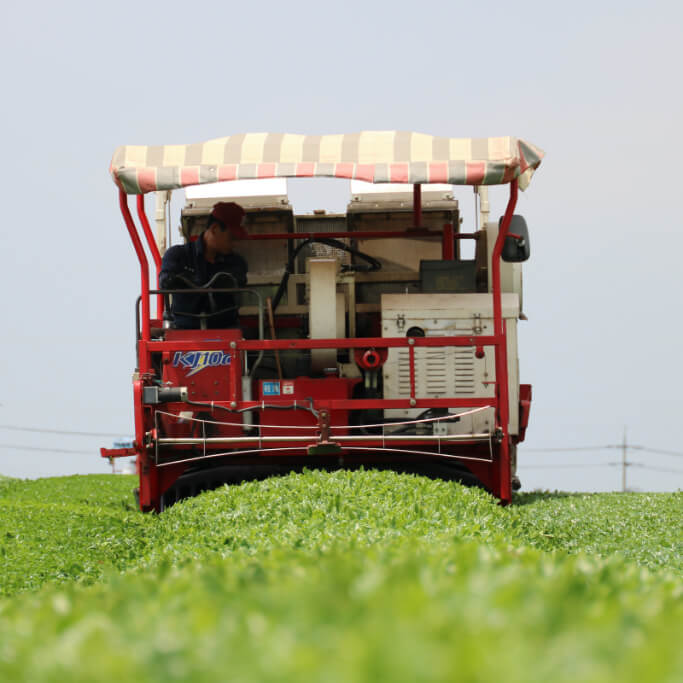
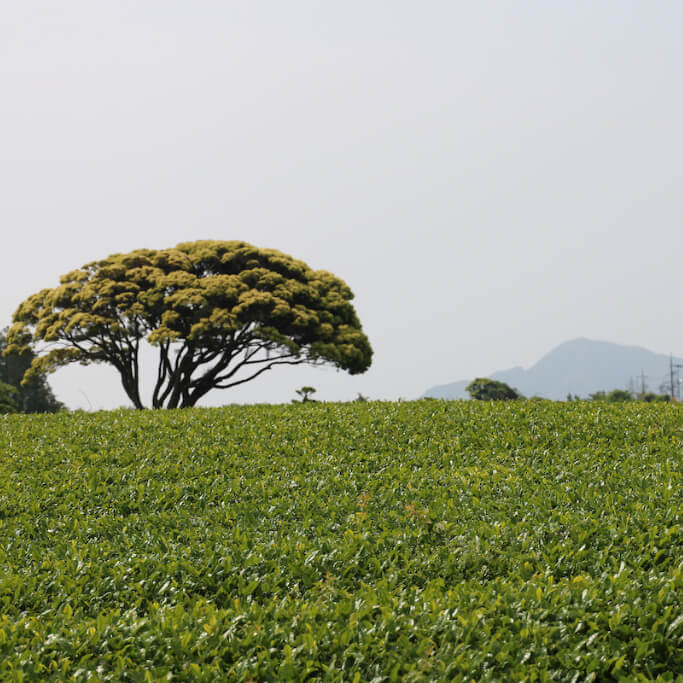
In addition to how it is processed into a powder that is stirred into water rather than steeped, there are other ways that matcha is different. With a cup of matcha, you are drinking the leaf, which many believe is a benefit. When you drink the tea leaf, you are consuming 100% of the leaf and all its nutrients. Many believe there are benefits to drinking matcha tea because you are consuming all its nutrients.
Matcha is also a seasonal tea, meaning that only new spring buds and leaves of the shade-grown tea plants are harvested for matcha production. The best time to harvest is when the plant has three to five new leaves. If harvested too early, the yield will be small; too late and the quality is compromised. This presents a narrow window for harvesting and production and is another reason matcha costs more than many other teas.
Finally, in addition to a wonderful cup of tea on its own, matcha is well-suited for making smoothies, ice cream and baked goods, making it one of the more versatile teas available.
Being a green tea, matcha does contain caffeine and in higher levels than other green teas. Because the entire leaf is used, matcha tea can contain nearly as much caffeine as a cup of coffee. However, caffeine release is believed to be slower because you are drinking the entire leaf. This slower release of caffeine reduces “caffeine jitters” that coffee or other teas can cause.
*While these caffeine levels hold true generally, caffeine in tea varies from plant to plant and within tea types.
There are several levels of matcha. The Japanese term for the best matcha is koicha, or “thick tea.” Also referred to as Ceremonial grade matcha, this type is made from the best spring leaves harvested in Uji. In Japan, koicha is ordinarily reserved for tea ceremonies. The next best grade, Premium, is called usucha, or “thin tea.” Usucha is less expensive, making it more suitable for everyday use as a traditional brew or a matcha latte. Finally, Culinary grade is a commercial grade used for ice cream, smoothies, baked goods and other green tea flavorings.
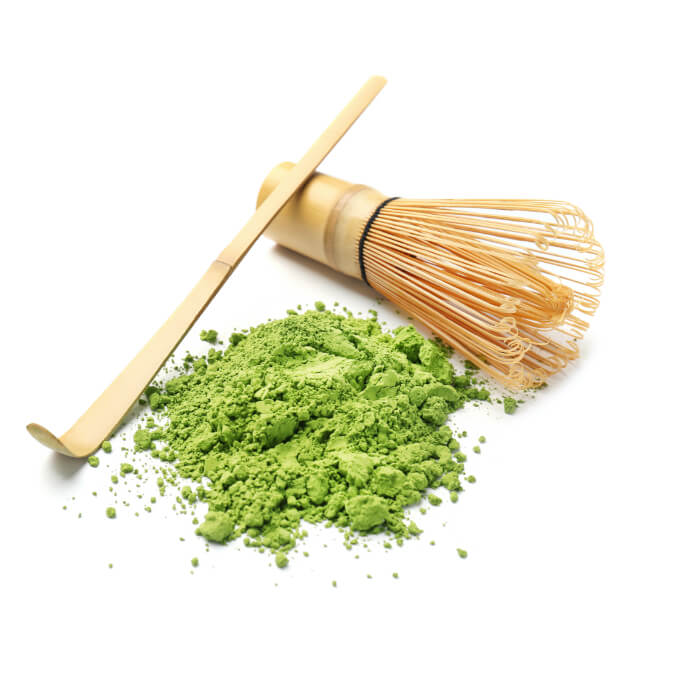
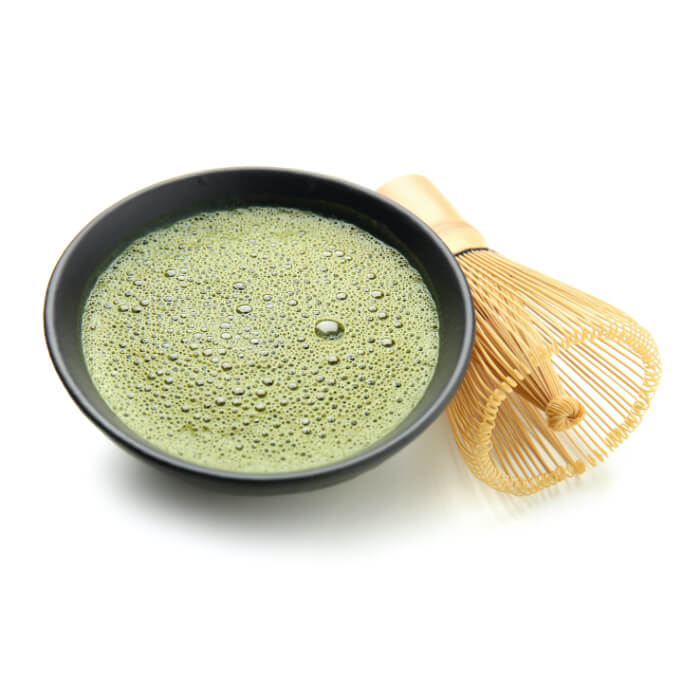
You’ll notice a price difference in the three grades, which primarily has to do with processing. Ceremonial grade in particular is processed with extreme care and uses the most carefully cultivated buds and leaves. It is processed with great care to create only the finest matcha and is meant to be enjoyed on its own, without any additives. Culinary, on the other hand, has a muted flavor that works well paired up with other ingredients. Its processing is not done with as much care as Ceremonial or Premium and may contain some stems and veins from the leaf— these are carefully removed from Ceremonial and Premium. Culinary may also contain a mix of matcha powders rather than a pure grind.
The color, aroma and flavor are also factors used to determine a matcha’s grade. Remember when you go to purchase this tea that not all matchas are created equal! If you want matcha to create a traditional cup to drink, you will have a finer experience if you purchase a Ceremonial- or Premium-grade matcha. If you want it to pair with food, save yourself a few bucks and purchase a Culinary grade, which works perfectly as a distinct flavor and color additive.
Which matcha grade you choose is up to you and completely a matter of taste, preference for thickness and desired experience. In the end, if you like it, you made the right choice! Here are three classic Harney matchas in each category:
This award-winning extra thick matcha is sweet and luxurious, perfect for a traditional cuppa.
This thick grade of matcha is not as thick or sweet as our Unjonotomo but will still provide you with a true matcha experience.
As a thin matcha, the flavors are more muted than Senjunomukashi and Unjonotomo. Both its thinner body and flavor make it ideal for whatever you want to whip it into in the kitchen.

Looking for a matcha that can just be your everyday matcha buddy? Nothing fancy, just straight up, delicious matcha? We gotcha covered there, too, with our Organic Everyday Matcha.
If blended teas are your jam, fear not! We have created matcha blends that take the uniqueness of a traditional matcha and add additional flavor for a different kind of matcha experience. These matchas are not powdered and are steeped like other teas.
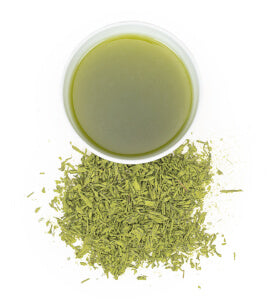
We blended matcha with bancha, juicy peach flavors and dried peaches, creating a lighter, enjoyably refreshing matcha. Iced, you ask? Why, of course! We even bottled it for you!

This blend is full of the finest bancha, mouthwatering strawberry-raspberry flavors and dried goji berries for a tangy twist.
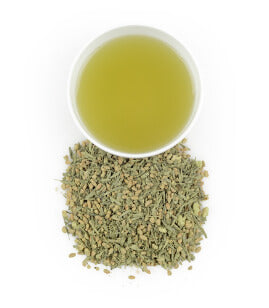
Matcha is a much beloved green tea in Japan, yet it can seem intense to the uninitiated Westerner. As an alternative, we suggest Matcha iri Genmaicha, the best of both worlds. The bancha ("cha") leaves and brown rice ("genmai") that comprise Genmaicha are coated with matcha green tea powder, and the result is fantastic!
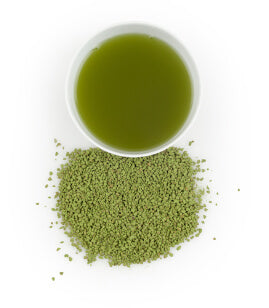
A mellow alternative to our Matcha iri Genmaicha, this matcha is silky-smooth and features a hint of sweetness from the buckwheat.
As we’ve said previously, matcha is heady and intense, offering a tea experience like no other. With a mouth-filling, even head-filling broth, the vegetal flavors of tencha are amplified exponentially. Matcha tastes intensely of spinach and artichokes, followed by a surprisingly bitter but satisfying kick. The better matchas balance the bitterness with sweet notes—especially in the aftertaste, which should linger long in the back of the mouth. Our blended matchas will give you an idea of the taste of a traditional matcha, but significantly muted.
You’ll notice a price difference in the three grades, which primarily has to do with processing. Ceremonial grade in particular is processed with extreme care and uses the most carefully cultivated buds and leaves. It is processed with great care to create only the finest matcha and is meant to be enjoyed on its own, without any additives. Culinary, on the other hand, has a muted flavor that works well paired up with other ingredients. Its processing is not done with as much care as Ceremonial or Premium and may contain some stems and veins from the leaf— these are carefully removed from Ceremonial and Premium. Culinary may also contain a mix of matcha powders rather than a pure grind.
The color, aroma and flavor are also factors used to determine a matcha’s grade. Remember when you go to purchase this tea that not all matchas are created equal! If you want matcha to create a traditional cup to drink, you will have a finer experience if you purchase a Ceremonial- or Premium-grade matcha. If you want it to pair with food, save yourself a few bucks and purchase a Culinary grade, which works perfectly as a distinct flavor and color additive.
We also offer a complete matcha kit to make preparation easy and fun.
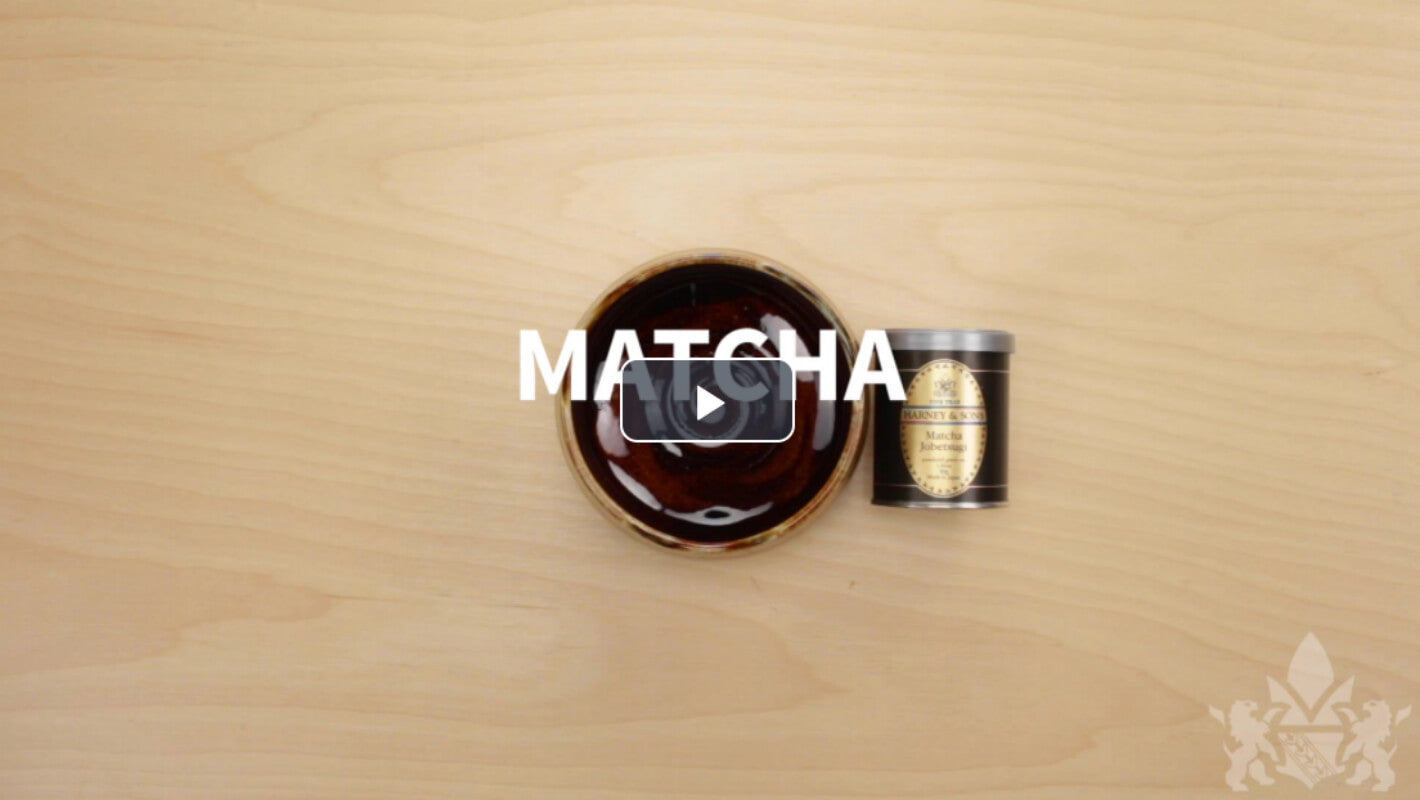
As we mentioned, Culinary-grade matcha is especially good for using in the kitchen. Here are some matcha-inspired recipes for you to try at home.
Like any tea, exposing matcha to elements like oxygen, sunlight, moisture and other odors will cause it to degrade in color and flavor. Our tins are the perfect storage solution for keeping your matcha fresh. Keep them in a cool, dark place like a cupboard. Do not store your tea in the fridge as that environment isn’t conducive to proper tea storage. Make sure your matcha is in an airtight container, but not plastic bags as they allow light and orders to seep in.
Even when properly stored, however, matcha can begin to degrade after a few months, so the sooner you use and enjoy it, the better.
Packed full of antioxidants, green tea is widely believed to be beneficial to your health. Since matcha is made from the whole green tea leaf, it is thought to be the healthiest of green teas with higher levels of antioxidants, vitamins, minerals and phytonutrients. So what are you waiting for— drink up!
Hopefully, for those existing matcha fans, you’ve learned a little more about this awesome tea and are ready to expand your matcha horizons. And for those who’ve yet to take matcha out for a spin, we hope we’ve convinced you it’s time to see what all the fuss is about. Check out our matcha collection and discover why this bold green tea deserves so much attention.